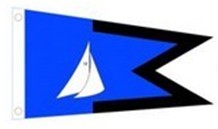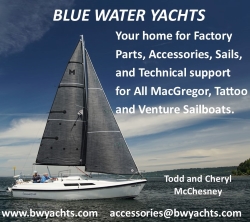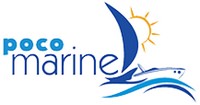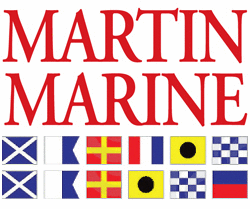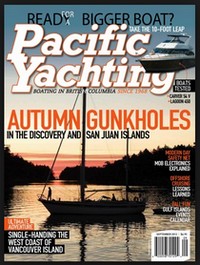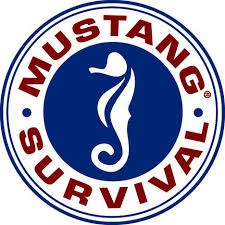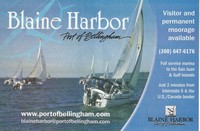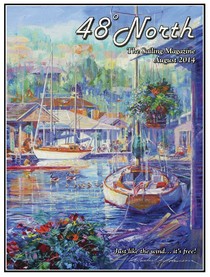MYCBC – Why Join Us › Forums › General Discussion › Terry looking for advice on Coastal Sailing in a 26X
- This topic has 0 replies, 1 voice, and was last updated 11 years, 7 months ago by
Anonymous.
-
AuthorPosts
-
December 1, 2013 at 10:59 pm #1286
Anonymous
Terry looking for advice on Coastal Sailing in a 26X
Site Admin, Sun Oct 25 2009, 08:37PMTerry is looking for some help. He has a 26X and lives in the Interior ( near Shuswap.
He’d like to know what sort of electronics we all use and whether to invest in a rolling furler.
Re: Terry looking for advice on Coastal Sailing in a 26X
Seaworthy, Sun Oct 25 2009, 08:43PMTerry, I have a 26X and have been Coastal Sailing for 10 years.
I use a cheap laptop with the free “Seaclear” software, a microsoft USB GPS, and Canadian Electronic charts.
I use a Garman 48 as a back up GPS. There are better units available now. This whole topic of electronic aids should get lots of responses as its been discussed lots before at meetings and get togethers. Everyone has an opinion. One of our past commodores used a pocket PC! with full moving map software.As for as the furler, I got one after my second year and ran all my lines aft to the cockpit. The safety factor in rough water was my reason. We rarely need to leave the cockpit now.
Hope you get more feed back from other members.
Re: Terry looking for advice on Coastal Sailing in a 26X
saynomore, Sun Oct 25 2009, 11:19PMTerry,
My boat is going through a transformation of basic sailplan to automation. I had to make sure that all my nautical knowledge was proven before moving on to the electronic world. Now that I am comfortable with this. This year I upgraded to roller furler and all lines to the cockpit. I recently purchased a Garmin GPS440S and Raymarine AUTOhelm. These two items will help sail with reasonable comfort and peace of mind. The other creature comforts are full inclosure. Running water in the galley, and mounter galley rack for dishes and stuff. I have thought alot about radar, as I have been caught in the fog a few times and my sense of adventure guides me to focus on isolated area’s. But then a better part of me has taught me to wait it out, read a good book, drop a line or crab net. If your planning on night sails, red light your electrical, to protect your vision.This should get you started. But make sure before you depend on all this electronic, know the basics… Can you find your position and plot your way home or safety.
Steve
Re: Terry looking for advice on Coastal Sailing in a 26X
Site Admin, Mon Oct 26 2009, 07:55PMSome folks really add great stuff to their boats. I prefer simple (and cheap). Rather than red lamps. I went to the dollar store and bought some red cellophane wrapping paper.
I unscrewed the lens on my flash light and put the cello over the glass trimming the excess with a knife. Reattaching the lens I now had a night vision saving red light that I can use anywhere in the boat.
Not sure what I’m going to do with the rest of the cello but it should come in handy around christmas.Re: Terry looking for advice on Coastal Sailing in a 26X
Windchime, Wed Oct 28 2009, 07:38PMWelcome aboard Terry,
I am not sure of your background or experience so pardon me if some of this is review for you.
Here is my two cents (which usually turns into a nickel)
GPS / Chartplotter – We use the Garmin 176C with built in antenna. It fits nicely on top of the “X steering pedestal. If not factory installed with the unit, please purchase the local digital charts as the global map that comes with the GPS is not suitable for naviagation.
I agree with Steve that in order to read electronic navigation devices, you still need strong chart reading skills. An electronic GPS / Chartplotter is just a digital paper chart. If you have not done so already, consider taking a navigation course from Power Squadron or a CYA authorized school.
*This is also a fairly basic free online course.
http://www.sailingissues.com/navcourse3.htmlVHF: A good quality VHF unit is required for communicating with the marina, other boats, and most importantly the Coast Guard in case of emergency. Each watt of power transmits one nautical mile. So a handheld unit produce 5 watts will go 5 miles. A hard-wired 25 watt unit will transmit 25 miles. Remember that the Georgia Straights narrowest crossing is about 12 miles (Point Roberts to Active pass)
*Important note: It is by law that all operators of a VHF radio have a VHF Restricted Operators Certificate.
Night Sailing:
If you have not done night sailing please practice on your lake before coming to the coast. Coastal night sailing can be exciting but needs caution. As the others mentioned red lights help, because it takes 40 minutes for your night vision to adjust. Also, ensure that you have memorized the List of Lights publication. As well as the Col Regs (Collisions Regulations). At night you need to know what the lights are you are looking at, and lights from shore and vehicle headlights, can make this more difficult. You need to know from memory that a South Cardinal Buoy is 6 quick flashes and one long every 15 seconds. Q(6)+LFI 15s. And that safe water is to the south of that light and which way south is. etc.Also, here is a post I made to a similar question on a different site.
Welcome to the Pacific Northwest!
The Salish Sea (all waters from Seattle to the North-End of Vancouver Island, and west to the entrance to the Juan De Fuca Straight) are a very sheltered area and not subject to blue-water swells, etc. It is an amazing cruising ground, but not without its dangers. Safe Sailing here takes good seamanship, which I define as a combination of; Knowledge, Practical Experience, and Situational Awareness.
I believe the biggest issues in this area are:
1. Weather
2. Current
3. Hazards to Navigation1. Weather:
The wind can pick up very fast in the Georgia and Juan De fu@ Straights. You can have strong wind or gale warnings on a clear blue-sky day ahead of an offshore front. A barometer on board is very handy. And VHF channel 2, 3, or 4 will always give you the latest weather and sea-state conditions.
Fog can be problem. The summer advection fog can reduce visibility to 20 feet and last for days. This normally happens when the warm wet air from Hawaii get pushed north and comes in from the Sow-west. Also known as the Hawaiian express.2. Current:
Spend the time to read a learn the tide book and current atlas, as we have a large tidal flow (10-14ft exchange) that can make for fast currents sometimes to 8 knots in constrained areas, especially in and out and through the Gulf and San Juan Islands. During max current (which is roughly between the high and low tides, although not a linear equation) you can have overfalls to 4 feet and whirlpools with 2-3 foot wide funnels. You will not see more that about 2-4 knots in the open straight, but on a two hour crossing it is easy to miss your landfall if not accounted for. Think of it as crossing a 10 nautical mile wide river with whales in it. We are in a “mixed semi bi-diurnal” tidal area, so the changes are inconsistent.3. Hazards to Navigation:
The San Juan Archipelago alone has something like 1150 islands at low tide, and only 500 or so a high tide. So there is lots of trouble below. Buy all the charts and get to know the major islands as it helps when on the water. We can see Turtle Back mountain (west side of Orcas Island) from near our home in Vancouver, and you can see it from Victoria as well. So it is always a good landmark for us. There are lots of designated commercial shipping lanes around as well that you need to be aware of.Passage Planning:
Although it’s nice to just jump in the boat and got where the wind takes you, I rarely do. A day sail is one thing, but when going for the weekend or longer I always follow a proper Passage Plan that includes; advanced large and small scale chart work with expected routes to take; advance tide and current calculations; fuel calculations; weather forecasts and isobar printouts; nearest ports on route for fuel and mechanical repairs; foul weather ports; medical aid, etc.
My wife and/or crew always know that I am aware of where we are and what’s around the next corner. There will always be surprises and may be unexpected problems, but they enjoy the trip a lot more knowing their skipper has a game plan with contingencies if things or conditions change.Sail with Others:
Join the “MacGregor Yacht Club of B.C.” and learn the local area with new friends. https://www.mycbc.ca .Have Fun, Be Safe … and “Leave Only Wake”
http://www.macgregorsailors.com/forum/viewtopic.php?f=8&t=14300&p=165642#p165642
…endAlso;
Please find attached below, a copy of an information session I did for the club at this past Rendezvous. It’s called “Straight Tips” and is some general information for crossing the “Georgia Straight” and other passages.Hope this helps a bit!
Darrystraight_tips.pdf [/html]
-
AuthorPosts
- You must be logged in to reply to this topic.

